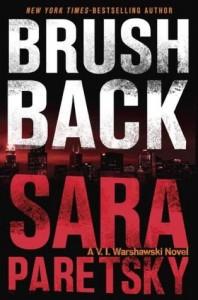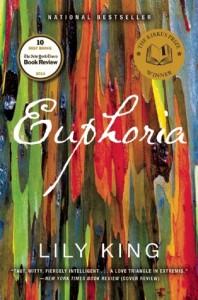Why #WritersRead + Annual Book Review Issue
December 15, 2015
Note From Rochelle
Dear Writers,
It’s been a whirlwind of a week, finishing the new website and getting a new ebook ready for the launch!
If you’d like to receive a copy of my new book, Write Your Book This Year: Three Shifts to Success, visit my home page and sign up to receive the Write Now! Tips newsletter.
Today’s tip talks about the value of reading for writers—and then I’ll be sharing my favorite books of the year!
Happy Writing (and reading!)
Rochelle, the Write Now! Coach
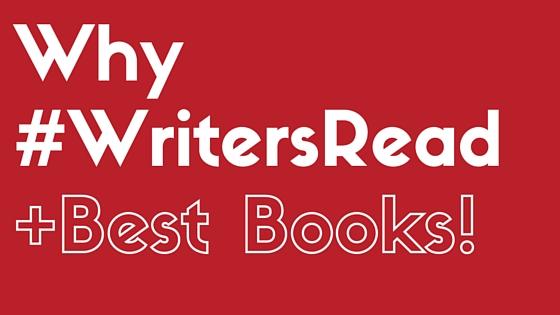
Are you a reader?
I hope so. Especially if you write books or want to write a book.
As Stephen King said,
If you don’t have time to read, you don’t have the time (or the tools) to write. Simple as that.
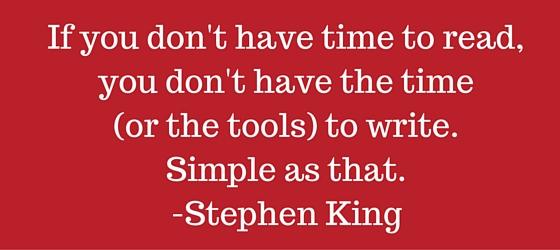
What was King thinking? How can he make such an outrageous statement?
I think I know.
Readers know what it’s like to come to a book, hoping for a good story or answers to life’s most difficult questions. They’ve depended on authors to tell a story that will not only entertain but also soften pain, curb loneliness, and tame anxiety. Readers know what keeps them turning pages until the wee hours of the morning—even when they have a day job. Readers also know what writers have done to betray or frustrate them, leaving them with no option but to toss a book across the room unfinished. Readers know what makes people fall in love with characters and even authors, thinking of them as old friends, dear and treasured.
And being a reader, knowing all of these secrets, you are better able to create stories that readers will fall into, finding hope and healing between the pages.
But if by chance you’re not a regular reader, here are some tips for starting a personal reading program that will benefit your writing:
1. Define your areas of interest. What do want to write about? If you don’t have any idea, here’s where to start: with your questions. The best topics to write and read about are ones that stir your passion and serve a greater purpose. In addition, a great topic will be something you’re still curious about. Don’t choose something that leaves you saying, “Been there, done that.”
2. Find reading material. Let your friends and booksellers know what you’re curious about and ask for recommendations. Read what the experts are writing. Read what the experts are reading (check their blogs and bibliographies for lists). Read those lists of, “Best books of …” or “Best books for …” and write down any title that sounds good. Go to the library or bookstore and browse until a title or cover pops out at you and says, “Read me!” By the end of this exercise, you’ll have a stack of articles or books to read.
3. Read. For the past 20 years, I’ve read between 80 and 150 books a year. Here’s my advice on how to make reading a habit.
• Set a goal to read for a specific amount of time each week.
• Add reading time to something your already doing, like morning coffee or a bedtime snack.
• Schedule reading time in your calendar.
• Read anything that looks interesting.
• Don’t feel compelled to finish any book. If something seems boring, put it down and start something new.
• Carry something to read at all times. Sometimes the best opportunities to read appear spontaneously. Be prepared!
Bonus Step: Record and Write
I’ve been keeping a record of what I’ve read for years. I also jot down my favorite quotes in a commonplace book. It makes it more likely that my reading history will influence my writing habit.
And now on to my Big Ol’ Book Review List.

Last week, I headed to the library looking for a good read. As I reviewed the shelves, I knew exactly what I needed: a story that would take me away to another place and immerse me in the stories of strangers. And that’s just what this list is filled with: books that will give you an experience in another place or time or life. Enjoy!
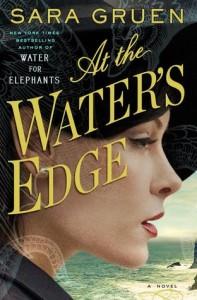 At the Water’s Edge by Sara Gruen. In the middle of WWII, Ellis and his best friend Hank decide they must go to Scotland to hunt the famous Lock Ness monster. Of course, Ellis has been cut off financially by his wealthy father, a former army Colonel embarrassed by his son’s inability to serve in the war. Ellis drags his wife Maddie along with him to Scotland—even though he and Hank seem to have no interest in or need for her. Maddie finds the solitude challenging until she discovers a way to make a life for herself, with new friends and the hope of love.
At the Water’s Edge by Sara Gruen. In the middle of WWII, Ellis and his best friend Hank decide they must go to Scotland to hunt the famous Lock Ness monster. Of course, Ellis has been cut off financially by his wealthy father, a former army Colonel embarrassed by his son’s inability to serve in the war. Ellis drags his wife Maddie along with him to Scotland—even though he and Hank seem to have no interest in or need for her. Maddie finds the solitude challenging until she discovers a way to make a life for herself, with new friends and the hope of love.
Brush Back by Sara Paretsky. I’ve been a fan of Paretsky and the V. I. Warshawski novels since 1995, when I read Indemnity Only. Finding a new one, well—that’s like finding out an old friend has come to town for a visit. I snatched it off the shelves and dug in, excited to find out what V.I was up to these days. I wasn’t disappointed—and you won’t be either. Warshawski hasn’t lost any of her spunk—and this case (or set of cases) has her revisiting her old neighborhood and the last months of her high school years.
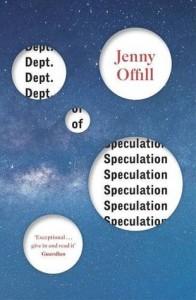 Dept. of Speculation by Jenny Offill. I read Dept. of Speculation in a day, fascinated by this love story. And then, after I knew how the love story ended, I skimmed it a second time, wondering if I could understood everything that happened. I may have to read it a third time. Whether you read it once or repeatedly, you’ll be haunted by this reflection on art and love and longing. Here’s a favorite quote:
Dept. of Speculation by Jenny Offill. I read Dept. of Speculation in a day, fascinated by this love story. And then, after I knew how the love story ended, I skimmed it a second time, wondering if I could understood everything that happened. I may have to read it a third time. Whether you read it once or repeatedly, you’ll be haunted by this reflection on art and love and longing. Here’s a favorite quote:
My plan was to never get married. I was going to be an art monster instead. Women almost never become art monsters because art monsters only concern themselves with art, never mundane things. Nabokov didn’t even fold his own umbrella. Vera licked his stamps for him. (p. 8)
Euphoria by Lily King. Do you secretly dream about exploring jungles, connecting with Native tribes, and discovering new ways to talk about human culture? If so, then you’ll adore Euphoria, Lily King’s romantic novel loosely based on the adventures of Margaret Mead. Nell Stone and her husband Fen have just escaped the brutal Mumbanyo tribe when they have a chance encounter with English anthropologist Andrew Bankson. He’s been alone for several years, studying the Kiona river tribe in New Guinea, deeply lonely and depressed as he dwells on the loss of his two brothers. Bankson finds the couple a new tribe, and things heat up, from new discoveries to wild romance. It might be cold outside, but it’s steamy in this jungle!
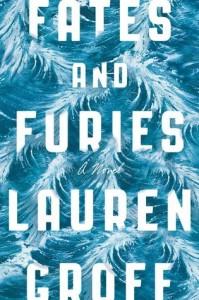
Fates and Furies by Lauren Groff. If you liked the surprises of Gone Girl but wished the characters were a tad more likeable and a little less over-the-top, then you’ll love Fates and Furies. Lauren Groff tells the story of the 24-year-marriage of the glamorous Lotto and Mathilde, who met and, in the midst of a whirlwind romance, married at 22. In Fates, the first part of the novel, we follow Lotto’s passion for Mathilde and his burgeoning career. We see Mathilde’s dedication to Lotto, supporting his stardom in every possible way. Of course, everything changes when we get to part two of the novel, and uncover the Furies. It’s a wild ride, but a fun one.
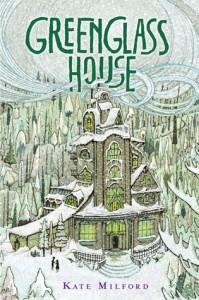 Greenglass House by Kate Milford. In this smart, funny middle grade mystery, 12-year-old Milo is looking forward to having a quiet winter break at the Inn his parents own. But despite the holiday and the icy weather, people show up. Pretty soon, the Inn is packed with guests, and tempers flare when several of the guests lose valuable possessions. It’s up to Milo and Meddy, the cook’s daughter, to find the clues and solve the mystery.
Greenglass House by Kate Milford. In this smart, funny middle grade mystery, 12-year-old Milo is looking forward to having a quiet winter break at the Inn his parents own. But despite the holiday and the icy weather, people show up. Pretty soon, the Inn is packed with guests, and tempers flare when several of the guests lose valuable possessions. It’s up to Milo and Meddy, the cook’s daughter, to find the clues and solve the mystery.
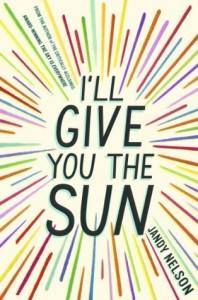 I’ll Give You the Sun by Jandy Nelson. In this heartbreaking young adult novel, we meet Jude and her twin brother Noah when they’re thirteen and incredibly close. Jude wears bright red lipstick and cliff dives while Noah pines for the handsome boy next door. Three years later, the twins are barely speaking—and we have no idea why. Noah tells the story of their early years. Jude shares the later years. As the story unfolds, it becomes clear that each twin only knows half the story, and they’ll have to find their way back to each other again to know the whole truth.
I’ll Give You the Sun by Jandy Nelson. In this heartbreaking young adult novel, we meet Jude and her twin brother Noah when they’re thirteen and incredibly close. Jude wears bright red lipstick and cliff dives while Noah pines for the handsome boy next door. Three years later, the twins are barely speaking—and we have no idea why. Noah tells the story of their early years. Jude shares the later years. As the story unfolds, it becomes clear that each twin only knows half the story, and they’ll have to find their way back to each other again to know the whole truth.
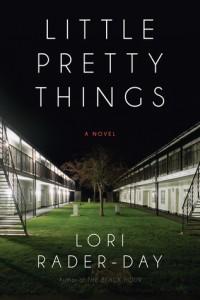 Little Pretty Things by Lori Rader-Day. Getting left behind has become a way of life for Juliet Townsend. In high school, she was stuck behind the shadow of her best friend Maddy Bell. And after spending ten years taking care of her mother and working a dead-end job at the Midnight Inn, Juliet feels like she’s been permanently left behind. A surprise visit from Maddy, boasting a huge diamond ring, only highlights Juliet’s loneliness. But then Maddy turns up dead, and Juliet becomes the key suspect. Juliet sets out to figure out what happened—both to Maddy and her own life.
Little Pretty Things by Lori Rader-Day. Getting left behind has become a way of life for Juliet Townsend. In high school, she was stuck behind the shadow of her best friend Maddy Bell. And after spending ten years taking care of her mother and working a dead-end job at the Midnight Inn, Juliet feels like she’s been permanently left behind. A surprise visit from Maddy, boasting a huge diamond ring, only highlights Juliet’s loneliness. But then Maddy turns up dead, and Juliet becomes the key suspect. Juliet sets out to figure out what happened—both to Maddy and her own life.
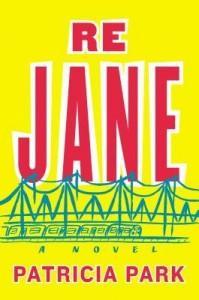 Re Jane by Patricia Park. In this modern retelling of Jane Eyre, Jane Re is a half-Korean, half-American orphan from Flushing, Queens. She escapes the drudgery of working in her uncle’s grocery store to become the au pair for the adopeted Chinese daughter of the erudite Mazer-Farley’s. Treated to feminist lectures from Beth Mazer and less-than-professional attention from Ed Farley, Jane escapes again—to Korea, after a death in the family. Throughout the story, Jane struggles to discover who she is, what culture she belongs in, and what family she belongs to.
Re Jane by Patricia Park. In this modern retelling of Jane Eyre, Jane Re is a half-Korean, half-American orphan from Flushing, Queens. She escapes the drudgery of working in her uncle’s grocery store to become the au pair for the adopeted Chinese daughter of the erudite Mazer-Farley’s. Treated to feminist lectures from Beth Mazer and less-than-professional attention from Ed Farley, Jane escapes again—to Korea, after a death in the family. Throughout the story, Jane struggles to discover who she is, what culture she belongs in, and what family she belongs to.
Shady Hollow: A Murder Mystery by Juneau Black. Looking to visit a cozy town with a great coffee shop, a 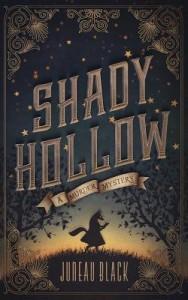 good bookstore, and maybe a few too many secrets? In this mystery—as sort of Agatha Christie meets Beatrix Potter—foxy reporter Vera Vixen and her trusty friend (and bookstore owner Lenore Lee), must figure out who murdered Otto Toad (and why!) before another member of their close-knit community dies. Poor yourself a hot cup of coffee and settle down to figure out whodunit in this well cast and deliciously set book.
good bookstore, and maybe a few too many secrets? In this mystery—as sort of Agatha Christie meets Beatrix Potter—foxy reporter Vera Vixen and her trusty friend (and bookstore owner Lenore Lee), must figure out who murdered Otto Toad (and why!) before another member of their close-knit community dies. Poor yourself a hot cup of coffee and settle down to figure out whodunit in this well cast and deliciously set book.
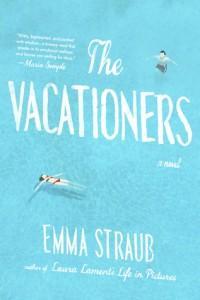 The Vacationers by Emma Straub. Why not travel to Mallorca for a few weeks to celebrate Franny and Jim’s 35th wedding anniversary? The food and weather will be great—I promise. So will snooping around in their lives. Jim’s just lost his job because he had sex with his intern. (Oops.) Franny’s pissed. (No kidding.) . Thankfully, Franny’s best friend Charles and his husband, Lawrence have come along to help take Franny’s mind off things—though they have their own anxieties. Franny and Jim’s daughter Sylvia has just graduated from high school and has lofty goals for the summer, like losing her virginity. Thank goodness the Spanish tutor her family’s lined up for her is hot. And her brother Bobby and his older girlfriend have also come—with their own share of worries. It’s fun to watch life fall apart in such a fun environment.
The Vacationers by Emma Straub. Why not travel to Mallorca for a few weeks to celebrate Franny and Jim’s 35th wedding anniversary? The food and weather will be great—I promise. So will snooping around in their lives. Jim’s just lost his job because he had sex with his intern. (Oops.) Franny’s pissed. (No kidding.) . Thankfully, Franny’s best friend Charles and his husband, Lawrence have come along to help take Franny’s mind off things—though they have their own anxieties. Franny and Jim’s daughter Sylvia has just graduated from high school and has lofty goals for the summer, like losing her virginity. Thank goodness the Spanish tutor her family’s lined up for her is hot. And her brother Bobby and his older girlfriend have also come—with their own share of worries. It’s fun to watch life fall apart in such a fun environment.
Nonfiction
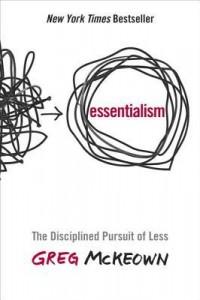 Essentialism: The Disciplined Pursuit of Less by Greg McKeown. In the midst of feeling overwhelmed, a friend suggested I read this book. I’ve found it to be a helpful reminder of the stuff I know but constantly fight to live. You know what I’m talking about. Ideas like this one: If you don’t prioritize your life, someone else will.
Essentialism: The Disciplined Pursuit of Less by Greg McKeown. In the midst of feeling overwhelmed, a friend suggested I read this book. I’ve found it to be a helpful reminder of the stuff I know but constantly fight to live. You know what I’m talking about. Ideas like this one: If you don’t prioritize your life, someone else will.
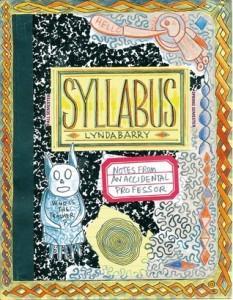 Syllabus: Notes from an Accidental Professor by Lynda Barry. Last year, this was on my to-read shelf, but this month it’s been in my hands most every morning and evening. I’m planning on keeping it near me over the holidays so I can do the exercises Barry demonstrates in the book.
Syllabus: Notes from an Accidental Professor by Lynda Barry. Last year, this was on my to-read shelf, but this month it’s been in my hands most every morning and evening. I’m planning on keeping it near me over the holidays so I can do the exercises Barry demonstrates in the book.
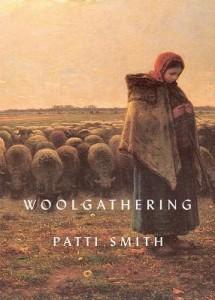 Woolgathering by Patti Smith. With billions of pages of words online and more books published every year, I sometimes need to read something small. One day when I was feeling burned out by books (say it isn’t so), a friend recommended this book by Patti Smith. In Woolgathering, Smith tells how she learned to gather truths and stories as a child. The original manuscript was written by hand on graph paper while her children were at school. This tiny book will help you fall in love with gathering ideas all over again.
Woolgathering by Patti Smith. With billions of pages of words online and more books published every year, I sometimes need to read something small. One day when I was feeling burned out by books (say it isn’t so), a friend recommended this book by Patti Smith. In Woolgathering, Smith tells how she learned to gather truths and stories as a child. The original manuscript was written by hand on graph paper while her children were at school. This tiny book will help you fall in love with gathering ideas all over again.

